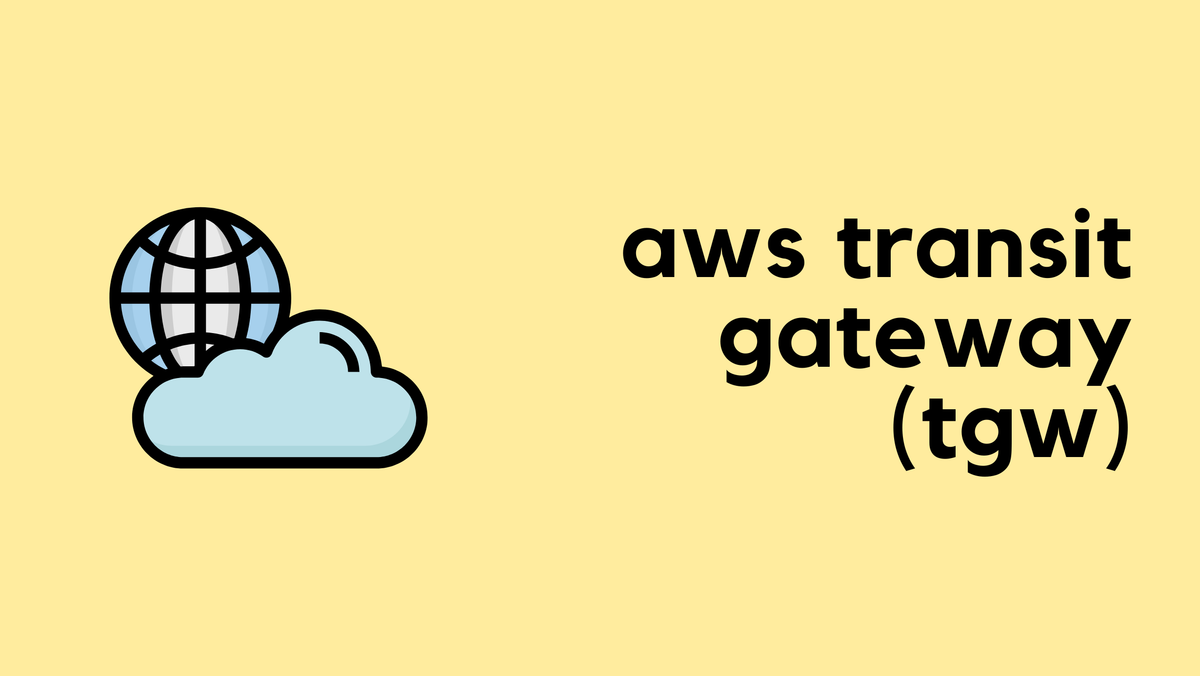Quicksilver v2: evolution of a globally distributed key-value store (Part 2)
Cloudflare has servers in 330 cities spread across 125+ countries. All of these servers run Quicksilver, which is a key-value database that contains important configuration information for many of our services, and is queried for all requests that hit the Cloudflare network.
Because it is used while handling requests, Quicksilver is designed to be very fast; it currently responds to 90% of requests in less than 1 ms and 99.9% of requests in less than 7 ms. Most requests are only for a few keys, but some are for hundreds or even more keys.
Quicksilver currently contains over five billion key-value pairs with a combined size of 1.6 TB, and it serves over three billion keys per second, worldwide. Keeping Quicksilver fast provides some unique challenges, given that our dataset is always growing, and new use cases are added regularly.
Quicksilver used to store all key-values on all servers everywhere, but there is obviously a limit to how much disk space can be used on every single server. For instance, the more disk space used by Quicksilver, the less disk space is left for content caching. Also, with each added server that contains a particular Continue reading
Explore your Cloudflare data with Python notebooks, powered by marimo
Many developers, data scientists, and researchers do much of their work in Python notebooks: they’ve been the de facto standard for data science and sharing for well over a decade. Notebooks are popular because they make it easy to code, explore data, prototype ideas, and share results. We use them heavily at Cloudflare, and we’re seeing more and more developers use notebooks to work with data – from analyzing trends in HTTP traffic, querying Workers Analytics Engine through to querying their own Iceberg tables stored in R2.
Traditional notebooks are incredibly powerful — but they were not built with collaboration, reproducibility, or deployment as data apps in mind. As usage grows across teams and workflows, these limitations face the reality of work at scale.
marimo reimagines the notebook experience with these challenges in mind. It’s an open-source reactive Python notebook that’s built to be reproducible, easy to track in Git, executable as a standalone script, and deployable. We have partnered with the marimo team to bring this streamlined, production-friendly experience to Cloudflare developers. Spend less time wrestling with tools and more time exploring your data.
Today, we’re excited to announce three things:
Demystifying Ultra Ethernet
The Ultra Ethernet Consortium (UEC), of which Arista is a founding member, is a standards organisation established to enhance Ethernet for the demanding requirements of Artificial Intelligence (AI) and High-Performance Computing (HPC). Over 100 member companies and 1000 participants have collaborated to evolve Ethernet, leading to the recent publication of its 1.0 specification, which will drive hardware implementations that significantly boost cluster performance.
Cloudflare 1.1.1.1 incident on July 14, 2025
On 14 July 2025, Cloudflare made a change to our service topologies that caused an outage for 1.1.1.1 on the edge, resulting in downtime for 62 minutes for customers using the 1.1.1.1 public DNS Resolver as well as intermittent degradation of service for Gateway DNS.
Cloudflare's 1.1.1.1 Resolver service became unavailable to the Internet starting at 21:52 UTC and ending at 22:54 UTC. The majority of 1.1.1.1 users globally were affected. For many users, not being able to resolve names using the 1.1.1.1 Resolver meant that basically all Internet services were unavailable. This outage can be observed on Cloudflare Radar.
The outage occurred because of a misconfiguration of legacy systems used to maintain the infrastructure that advertises Cloudflare’s IP addresses to the Internet.
This was a global outage. During the outage, Cloudflare's 1.1.1.1 Resolver was unavailable worldwide.
We’re very sorry for this outage. The root cause was an internal configuration error and not the result of an attack or a BGP hijack. In this blog, we’re going to talk about what the failure was, why it occurred, and what we’re doing to Continue reading
Cloudflare recognized as a Visionary in 2025 Gartner® Magic Quadrant™ for SASE Platforms
We are thrilled to announce that Cloudflare has been named a Visionary in the 2025 Gartner® Magic Quadrant™ for Secure Access Service Edge (SASE) Platforms1 report. We view this evaluation as a significant recognition of our strategy to help connect and secure workspace security and coffee shop networking through our unique connectivity cloud approach. You can read more about our position in the report here.
Since launching Cloudflare One, our SASE platform, we have delivered hundreds of features and capabilities from our lightweight branch connector and intuitive native Data Loss Prevention (DLP) service to our new secure infrastructure access tools. By operating the world’s most powerful, programmable network we’ve built an incredible foundation to deliver a comprehensive SASE platform.
Today, we operate the world's most expansive SASE network in order to deliver connectivity and security close to where users and applications are, anywhere in the world. We’ve developed our services from the ground up to be fully integrated and run on every server across our network, delivering a unified experience to our customers. And we enable these services with a unified control plane, enabling end-to-end visibility and control anywhere in the world. Tens of thousands of customers Continue reading
Dry Run: Your Kubernetes network policies with Calico staged network policies
Kubernetes Network Policies (KNP) are powerful resources that help secure and isolate workloads in a cluster. By defining what traffic is allowed to and from specific pods, KNPs provide the foundation for zero-trust networking and least-privilege access in cloud-native environments.
But there’s a problem: KNPs are risky, and applying them without a clear game plan can be potentially disruptive.
Without deep insight into existing traffic flows, applying a restrictive policy can instantly break connectivity killing live workloads, user sessions, or critical app dependencies. An even scarier scenario is when we implement policies that we think cover everything and workloads actually work, but after a restart or scaling operation we hit new problems. Kubernetes, with all of its features, has no built-in “dry run” mode for policies, and no first-class observability to show what would be blocked or allowed which is the right decision since Kubernetes is an orchestrator not an implementer.
This forces platform teams into a difficult choice, deploy permissive or no policies and weaken security, or Risk service disruption while debugging restrictive ones. As a result, many teams delay implementing network policies entirely only to regret it after a zero-day exploit like Log4Shell, XZ backdoor, or other vulnerabilities Continue reading
Hyper-volumetric DDoS attacks skyrocket: Cloudflare’s 2025 Q2 DDoS threat report
Welcome to the 22nd edition of the Cloudflare DDoS Threat Report. Published quarterly, this report offers a comprehensive analysis of the evolving threat landscape of Distributed Denial of Service (DDoS) attacks based on data from the Cloudflare network. In this edition, we focus on the second quarter of 2025. To view previous reports, visit www.ddosreport.com.
June was the busiest month for DDoS attacks in 2025 Q2, accounting for nearly 38% of all observed activity. One notable target was an independent Eastern European news outlet protected by Cloudflare, which reported being attacked following its coverage of a local Pride parade during LGBTQ Pride Month.
DDoS attacks continue to break records. During 2025 Q2, Cloudflare automatically blocked the largest ever reported DDoS attacks, peaking at 7.3 terabits per second (Tbps) and 4.8 billion packets per second (Bpps).
Overall, in 2025 Q2, hyper-volumetric DDoS attacks skyrocketed. Cloudflare blocked over 6,500 hyper-volumetric DDoS attacks, an average of 71 per day.
Although the overall number of DDoS attacks dropped compared to the previous quarter — which saw an unprecedented surge driven by a large-scale campaign targeting Cloudflare’s network and critical Internet infrastructure protected by Cloudflare — the Continue reading
Blog Reboot
When I first launched this site, many years ago, it served as a humble lab notebook and sharing short personal stories from my working life. I shared diagrams, Junos configs , and field notes written after late night maintenance windows or proof of concepts. Those stories took on a life of their own. They brought […]
The post Blog Reboot first appeared on Rick Mur.Integration Testing in Infrahub – Validate Your Automation in Real Environments

Testing individual components is a good start, but what happens when you need to validate how everything works together? In this post, we’ll show you how to run integration tests in Infrahub that verify your schema, data, and Git workflows in a real, running environment.
You’ll learn how to spin up isolated Infrahub instances on the fly using Docker and Testcontainers, automate schema and data loading, and catch issues before they reach production.
OpsMill has partnered with me for this post, and they also support my blog as a sponsor. The post is originally published under https://opsmill.com/blog/integration-testing-infrahub/
You don’t need to be a Python expert to follow along. We’ll walk through everything step by step, with example code and tooling recommendations. You can also follow this guide in video form on the Cisco DevNet YouTube channel:
- Building a Production-Grade Automation Platform With Infrahub – Part 1
- Building a Production-Grade Automation Platform With Infrahub – Part 2
All the sample data and code used here are available on the OpsMill GitHub repo, so you can set up your own test environment and try it yourself.
Quick recap
Previously, we covered how to write smoke and unit tests using the Continue reading
Triggering QUIC
We look in detail at the mechanisms used to trigger a client application (typically a browser) to connect to the server using the QUIC transport protocol.Go is still not good
Previous posts Why Go is not my favourite language and Go programs are not portable have me critiquing Go for over a decade.
These things about Go are bugging me more and more. Mostly because they’re so unnecessary. The world knew better, and yet Go was created the way it was.
For readers of previous posts you’ll find some things repeated here. Sorry about that.
Error variable scope is forced to be wrong
Here’s an example of the language forcing you to do the wrong thing. It’s very helpful for the reader of code (and code is read more often than it’s written), to minimize the scope of a variable. If by mere syntax you can tell the reader that a variable is just used in these two lines, then that’s a good thing.
Example:
if err := foo(); err != nil {
return err
}
(enough has been said about this verbose repeated boilerplate that I don’t have to. I also don’t particularly care)
So that’s fine. The reader knows err is here and only here.
But then you encounter this:
bar, err := foo()
if err != nil {
return err
}
if err = Continue readingAWS Transit Gateway Peering Attachments (VIII)

Hi all, welcome back to the AWS networking series. This is actually part 3 of just Transit Gateway. I know some of you might be thinking, why are we still talking about Transit Gateway? But please bear with me. TGW is such an important concept, and it shows up in almost every architecture you come across.
So far, we've covered what a Transit Gateway is, how to create one, how route tables work, and how to manage associations and propagations. We also looked at how to create a VPN and attach it to the TGW, and we went through the process of sharing a TGW with other AWS accounts using AWS Resource Access Manager (RAM). In this post, we'll look at how to peer a Transit Gateway with another TGW, even when they are in different regions. So let's get to it.
If you're completely new to Transit Gateway, I highly recommend checking out the earlier introductory posts listed below.
Tracing network packets with eBPF and pwru
pwru (packet, where are you?) is an open source tool from Cilium that used eBPF instrumentation in recent Linux kernels to trace network packets through the kernel.In this article we will use Multipass to create a virtual machine to experiment with pwru. Multipass is a command line tool for running Ubuntu virtual machines on Mac or Windows. Multipass uses the native virtualization capabilities of the host operating system to simplify the creation of virtual machines.
multipass launch --name=ebpf noble multipass exec ebpf -- sudo apt update multipass exec ebpf -- sudo apt -y install git clang llvm make libbpf-dev flex bison golang multipass exec ebpf -- git clone https://github.com/cilium/pwru.git multipass exec ebpf --working-directory pwru -- make multipass exec ebpf -- sudo ./pwru/pwru -hRun the commands above to create the virtual machine and build pwru from sources.
multipass exec ebpf -- sudo ./pwru/pwru port httpsRun pwru to trace https traffic on the virtual machine.
multipass exec ebpf -- curl https://sflow-rt.comIn a second window, run the above command to generate an https request from the virtual machine.
SKB CPU PROCESS NETNS MARK/x IFACE PROTO MTU LEN TUPLE FUNC 0xffff9fc40335a0e8 0 ~r/bin/curl:8966 4026531840 0 0 Continue reading
Hedge 273: The Future is Operations
Many of us old timers (and a lot of young timers) worry about the future of networking. What if the future isn’t a technology, or even AI, but a change in focus? Mike Bushong joins Tom and Russ to argue for operations as the future of networking.
download
Dual-Stack Common-Services VRF Confuses Aruba CX
As I was running the netlab pre-release integration tests, I noticed that ArubaCX failed the IPv6 Common Services test (it worked before). Here’s the gist of what that test does:
- It creates three VRFs (red, blue, and common)
- It imports routes from red and blue VRF into the common VRF and routes from the common VRF into the red and blue VRF (the schoolbook example of common services VRF)
- Just to be on the safe side, it imports red routes into the red VRF and so on.
Here’s the relevant part of the netlab lab topology:
AI Metrics with InfluxDB Cloud
The InfluxDB AI Metrics dashboard shown above tracks performance metrics for AI/ML RoCEv2 network traffic, for example, large scale CUDA compute tasks using NVIDIA Collective Communication Library (NCCL) operations for inter-GPU communications: AllReduce, Broadcast, Reduce, AllGather, and ReduceScatter.The metrics include:
- Total Traffic Total traffic entering fabric
- Operations Total RoCEv2 operations broken out by type
- Core Link Traffic Histogram of load on fabric links
- Edge Link Traffic Histogram of load on access ports
- RDMA Operations Total RDMA operations
- RDMA Bytes Average RDMA operation size
- Credits Average number of credits in RoCEv2 acknowledgements
- Period Detected period of compute / exchange activity on fabric (in this case just over 0.5 seconds)
- Congestion Total ECN / CNP congestion messages
- Errors Total ingress / egress errors
- Discards Total ingress / egress discards
- Drop Reasons Packet drop reasons
Note: InfluxDB Cloud has a free service tier that can be used to test this example.
Save the following compose.yml file on a system running Docker.
configs:
config.telegraf:
content: |
[agent]
interval = '15s'
round_interval = true
omit_hostname = true
[[outputs.influxdb_v2]]
urls = ['https://<INFLUXDB_CLOUD_INSTANCE>.cloud2.influxdata.com']
Continue reading
Quicksilver v2: evolution of a globally distributed key-value store (Part 1)
Quicksilver is a key-value store developed internally by Cloudflare to enable fast global replication and low-latency access on a planet scale. It was initially designed to be a global distribution system for configurations, but over time it gained popularity and became the foundational storage system for many products in Cloudflare.
A previous post described how we moved Quicksilver to production and started replicating on all machines across our global network. That is what we called Quicksilver v1: each server has a full copy of the data and updates it through asynchronous replication. The design served us well for some time. However, as our business grew with an ever-expanding data center footprint and a growing dataset, it became more and more expensive to store everything everywhere.
We realized that storing the full dataset on every server is inefficient. Due to the uniform design, data accessed in one region or data center is replicated globally, even if it's never accessed elsewhere. This leads to wasted disk space. We decided to introduce a more efficient system with two new server roles: replica, which stores the full dataset and proxy, which acts as a persistent cache, evicting unused key-value pairs to free Continue reading
AWS Transit Gateway VPN Attachment and Resource Access Manager (VII)

In the previous post, we covered the basics of Transit Gateway, what it is, what problem it solves, and we also looked at how to create one. We walked through attaching two VPCs to the TGW and establishing connectivity between them. We also covered the important concepts of TGW attachments, associations, and propagations.

In this post, we will build on that knowledge and look at
- Creating and attaching a Site-to-Site VPN to the Transit Gateway.
- We will also cover sharing a single Transit Gateway across different AWS accounts using Resource Access Manager.
As always, if you find this post helpful, press the ‘clap’ button. It means a lot to me and helps me know you enjoy this type of content. If I get enough claps for this series, I’ll make sure to write more on this specific topic.
Transit Gateway AWS Site-to-Site VPN Attachment
We have already seen how to create a Site-to-Site Continue reading
Worth Reading: The Secret Rules of the Terminal
Did you ever wonder why pressing an up-arrow in a (Linux) terminal window sometimes recalls the previous command but other times creates ^[[A?
Julia Evans did, and spent months exploring the quirks of the Linux terminal (and writing blog posts describing what she found), finally resulting in The Secret Rules of the Terminal (including the various shells, terminal emulators, escape codes, and TTY driver). A must-read if you’re a newbie who wants to understand why things happen the way they do.




